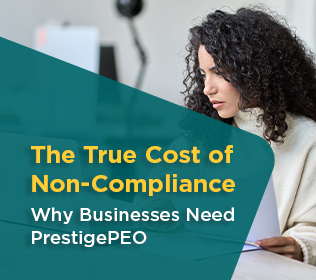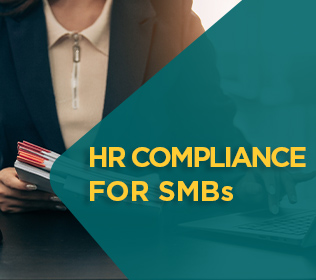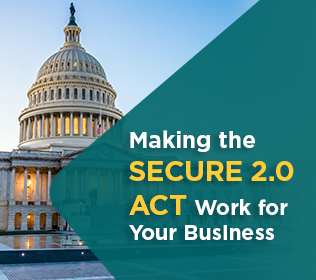The pay gap between communities widens every year. We discuss where it comes from and how we can close the gap.
August is an important month for acknowledging the need to continue implementing, creating, and pursuing a workplace environment of equal opportunities. This month is known as Black Business Month and National Civility Month. Additionally, National Women’s Equality Day also takes place in August. During this time, the DEI Committee at PrestigePEO recognizes the overall need for equality in the workplace. Read on for a reflection on where inequality still exists and what businesses can do to change it.
Addressing the Gender Wage Gap Between Men and Women
The conversation about pay inequity began with the gender wage gap, which refers to the difference in earnings between men and women. On average, women earn just 82 cents for every $1 earned by a man. It is important to note that this pay gap is calculated across all industries, not simply comparing men and women of equal positions and experience. Doing so also encompasses other factors that cause the wage gap like the industries that men and women work in. Women are often pushed out of industries like building and construction, considered “male” industries, and into jobs like aides, care workers, and others. The industries that women commonly work in offer lower pay and fewer benefits than male-led industries, so it is important to keep this in mind when considering pay inequality between genders.
Further, because the burden of care for children is disproportionately expected of women, they often have less work experience than men. They work fewer hours because of these unpaid obligations, which can hinder career growth and can limit women in the promotions they can attain. In a situation where a man is promoted to a higher position because he has more experience, consider that a woman may have had fewer opportunities to achieve that same experience.
Acknowledging the Wage Gap Between People of Color and White Men and Women
The following conversation that presents itself during this month addresses race. When we say that women earn 82 cents to every dollar a man makes, this only applies to white men and women. The wage gap increases for women of color, and men of color do not earn as much as their white male counterparts. The opportunities to advance careers don’t present themselves for non-white individuals as often as for white men and women, which causes the same inequity we have learned exists between white men and women discussed in the previous section.
Unconscious biases or outright racism can prevent non-white workers from receiving experience, education, and career development opportunities. Equal Pay Day is a poignant reminder of the inequity that still exists today in the workforce. Did you know that there is more than one Equal Pay Day? The first date falls on March 15th, representing how many additional days women must work to earn the same amount as men. But that date represents the inequality experienced by white women, and the pay gap varies significantly among other communities. Therefore, additional Equal Pay Days were added to the calendar to reflect that non-white women face further hardship. This article from the American Association of University Women (AAUW) lists when the Equal Pay Days fall in 2022. These dates move each year as the pay gap widens. Additionally, you can learn more about the wage gap for women of color here.
Does the Pay Gap Affect The LGBTQIA+ Community?
More recently, the conversation about pay inequality has also recognized the pay gap experienced by the LGBTQIA+ community. An Equal Pay Day was designated for the LGBTQIA+ community on June 15th this year to coincide with Pride Month. Still, this date does not accurately reflect the wages it takes this community to earn an equivalent amount as their heterosexual counterparts. This is because the United States has never captured this data, meaning that we cannot quantify this gap. As non-white women suffer more severely from pay inequality than white women, these difficulties increase for non-white LGBTQIA+ individuals, especially those who are transgender. For example, the Human Rights Campaign reported that 58% of transgender people of color had their hours reduced during the pandemic, which was the highest figure of any group surveyed. 26% of transgender people were laid off due to the pandemic, compared to only 12% of the general population. More data is needed to assess the inequality experienced by the LGBTQIA+ community accurately, but we can safely assume that this community also suffers from unequal pay.
Ways Business Owners Can Help Negate Pay Inequalities in Their Own Organizations
Now that we’ve explored the communities affected by a pay gap, as business owners, what can you do about it? An essential first step implementing diversity education and, ideally, a DEI committee. Unconscious bias can often be the source of many of these issues. By educating each employee, you can contribute to the process of a more enlightened business community in the future. On a more macro level, you can look for pay inequality within your workplace. Conduct a pay audit in your organization to see who might be affected. You can work towards work towards leveling out these gaps with pay adjustments based on the results of the audit. You can also make huge strides towards change by examining your hiring practices. Clearly state the salary range on your job postings and do not ask for a candidate’s pay history when determining how much you will offer. In an effort to combat salary inequality, many states now ban employers from asking for a candidate’s salary history to determine a job offer. These two factors can make it extremely difficult for an individual to overcome pay inequity. More change is needed on a federal and state level, but if all businesses began practicing these processes, we could move closer toward pay equality for all.
Pay inequality affects so many communities that it can seem an impossible challenge to tackle. But we can take necessary steps forward by making changes in your organization and serving as an example for the business community. At PrestigePEO, we are proud to partner with our clients to assist in these matters and more. Your team of HR professionals can help you conduct a pay audit and address any inequity within your business. We can also provide access to training and help to conduct diversity training and assist with revamping your hiring practices for increased transparency. You’re not in this alone – PrestigePEO is ready to assist your business with HR management, employee benefits, retirement services, compliance, payroll, and more. Get in touch with us today to learn more about how we can empower your business.





